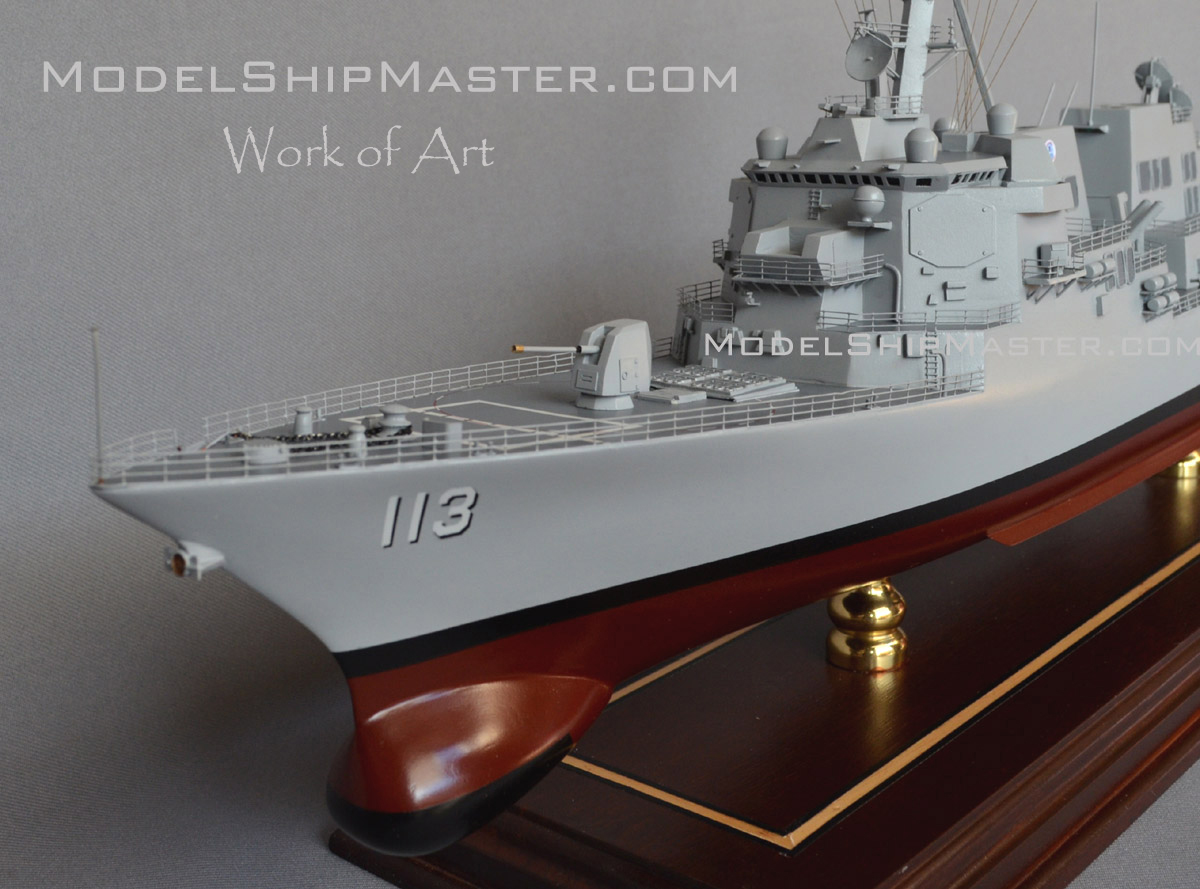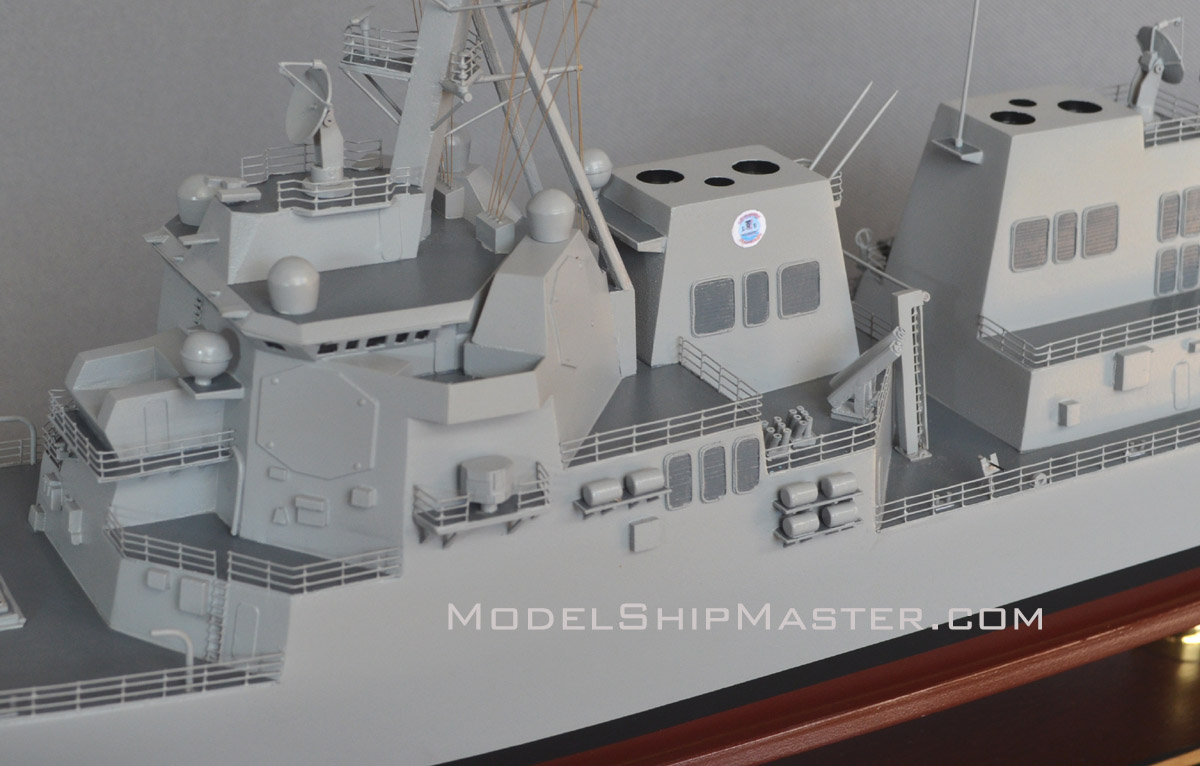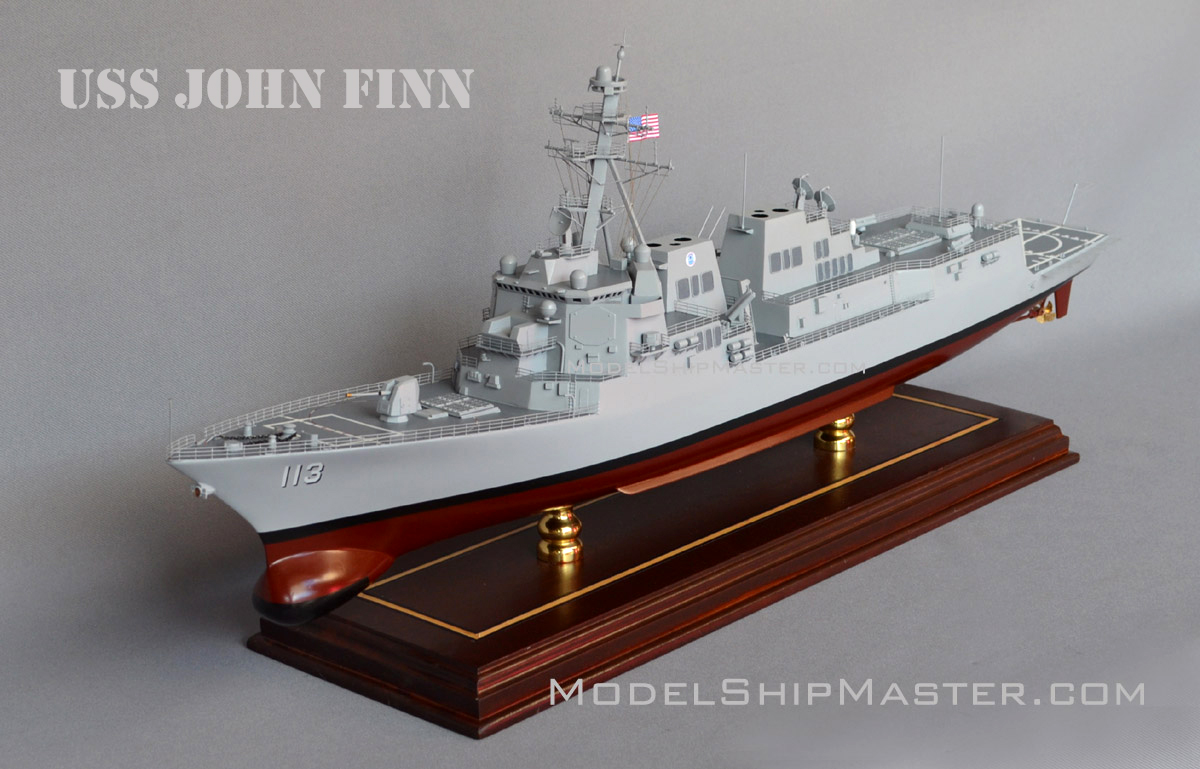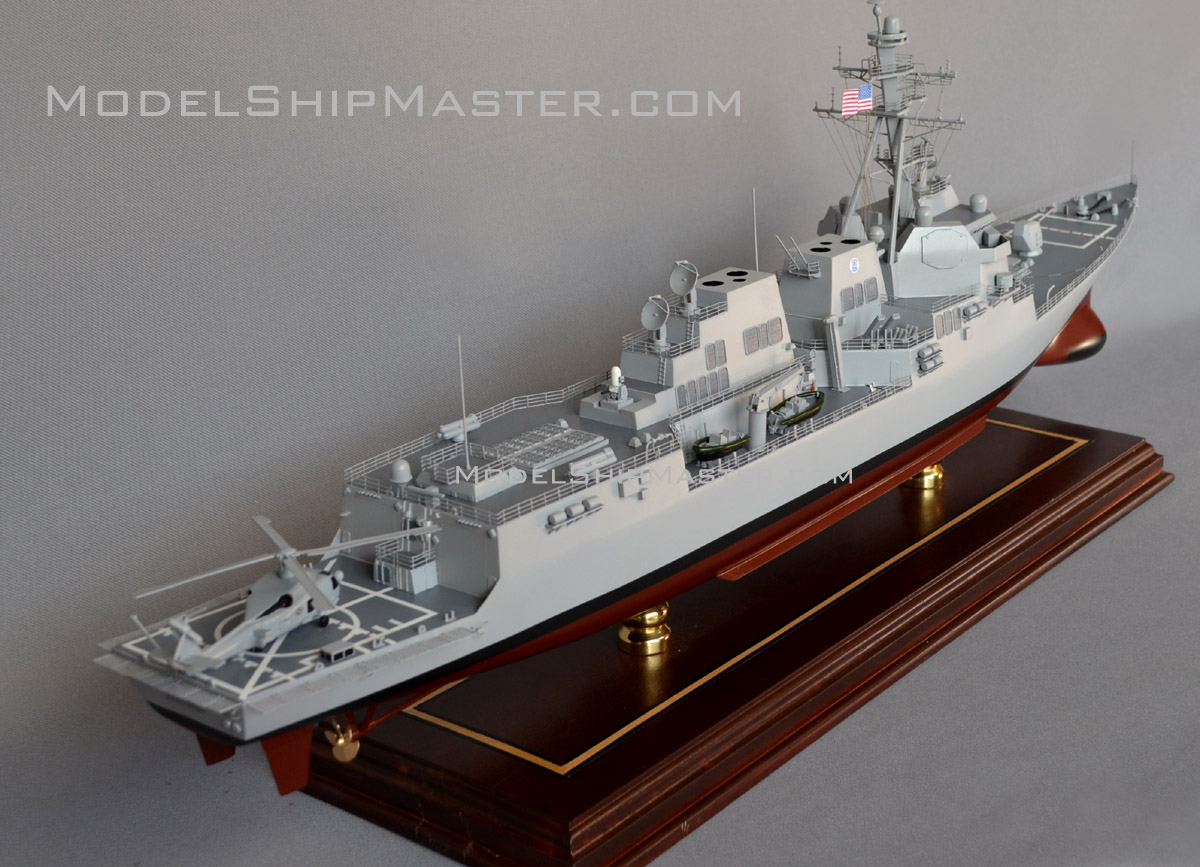|
USS JOHN FINN DDG-113
Flight IIA Arleigh Burke Class

John Finn is the 63rd
Arleigh Burke-class destroyer. As an Arleigh Burke-class
ship, John Finn's roles included anti-aircraft,
anti-submarine, and anti-surface warfare, as well as
strike operations. John Finn is a Flight IIA ship that
features several improvements in terms of ballistic
missile defense, an embarked air wing (two MH-60R Light
Airborne Multi-Purpose System helicopters), and the
inclusion of mine-detecting ability. DDG-51 was also the
first class of ships in the U.S. Navy to include
anti-NBC (Nuclear, Biological, and Chemical) warfare
protection. The vessel was commissioned on 15 July 2017
in Pearl Harbor and is home ported in San Diego.

On November 17, 2020, the
U.S. Navy and the U.S. Missile Defense Agency carried
out the first successful shoot-down of an
intercontinental ballistic missile from a platform at
sea.
In the test, an SM-3 missile from the destroyer USS John
Finn intercepted and destroyed a mock ICBM target over
the Pacific at a position northeast of Hawaii. The
target was launched from the test site on Kwajalein
Atoll towards the mainland in a "defense-over-Hawaii"
scenario. The MDA's Command and Control Battle
Management Communications network fed tracking data to
USS John Finn, which launched the SM-3 and took down the
target while it was in flight - outside of the Earth's
atmosphere.
“This first-of-its-kind
test shows that our nation has a viable option for a new
layer of defense against long-range threats,” said Bryan
Rosselli, the vice president of Strategic Missile
Defense at Raytheon Missiles & Defense, in a statement
Monday.

on 25
April, 2021, USS John Finn (DDG-113) made another
history again. She successfully launched an Extended
Range Active Missile (SM-6) missile that hit at a
long-range target well beyond the line of sight--more
than 250 miles and beyond the range of its powerful
radar.
The target
was equipped with a small radar reflector and a repeater
that put out an electromagnetic signal. The signal from
the repeater was detectable by sensors on the uncrewed
aircraft and manned and unmanned surface vessels.
“It was
really complex… We teamed manned and unmanned vessels
together. We also used the fusing capability that we’re
doing some experimentation on. It was totally passive
where we didn’t have active sensors on target,” Aiken
said.
“We also look for space as well to actually identify the
target and then once we found the target, we were able
to track it because of the [electromagnetic signal] that
was coming off the target, develop lines of bearing,
then launched the missile.”
The
anti-surface missile shot of the SM-6 is a proof of
concept of how the Navy could augment its very powerful
but very detectable targeting radars with a blended
network of passive sensors that could share targeting
data without alerting the target. The test also shows
how the lethal radius of a surface-launched missile
could expand well beyond a ship’s radar range, which is
limited by the curvature of the Earth.
Driving
much of the Navy’s thinking in how it develops its
future surface fleet, both manned and unmanned, is the
development of Chinese anti-ship missiles that are
designed to threaten U.S. surface ships in areas close
to the Chinese mainland like the South China Sea.
A passive
multi-static sensor scheme, like the one demonstrated in
the SM-6 shot, that would fuse several sources into a
single targeting solution would better protect the
surface fleet from threats like anti-ship ballistic
missiles than using a single ship with a powerful active
sensor.

This primarily
wood USS John Finn ship model is 31" x 12.5" tall x
4.5" wide (the base is 7" wide) (1/200 scale)
$3,180
Shipping and insurance in
the contiguous USA included.
Other places: $300 flat rate.
We also build flight IIA
models at 18" long (1/350 scale)
$1,950
and
42" long (1/144 scale) $4,950.
Model is built per commission only. We require only
a small deposit to start the process. Please click here for
more details.
Click here to
learn about authentic
warship
models.
.jpg)
Learn more about the
USS John Finn here:
https://en.wikipedia.org/wiki/USS_John_Finn
|